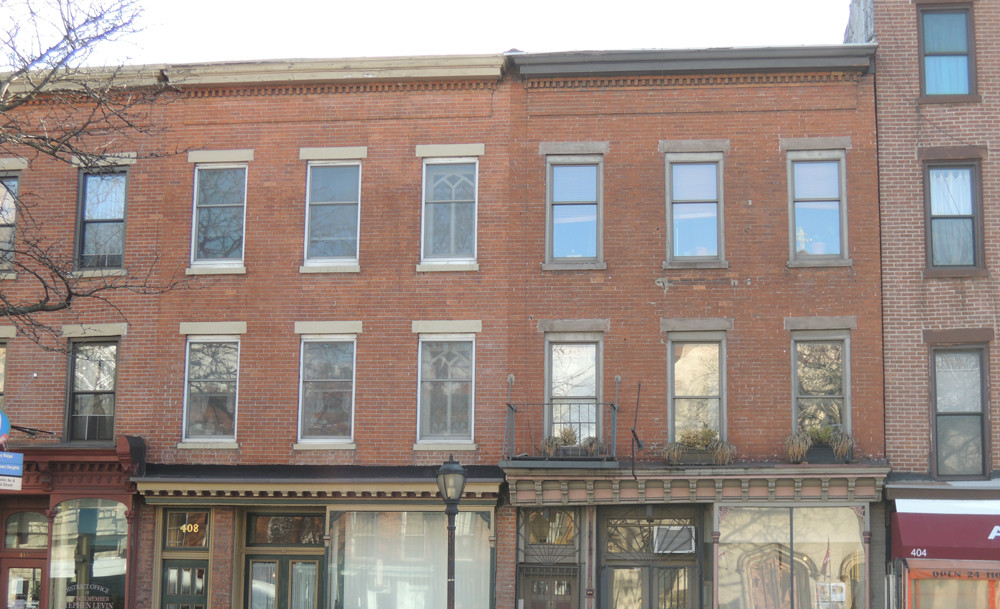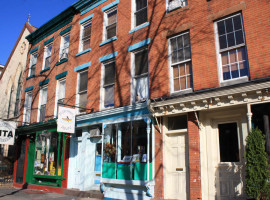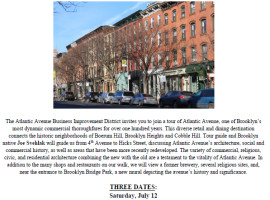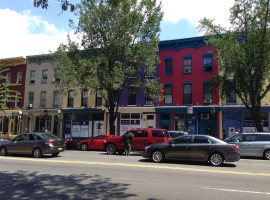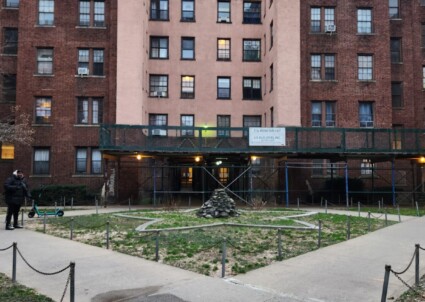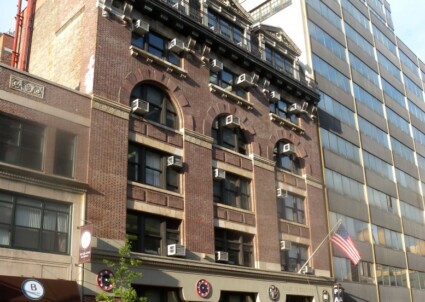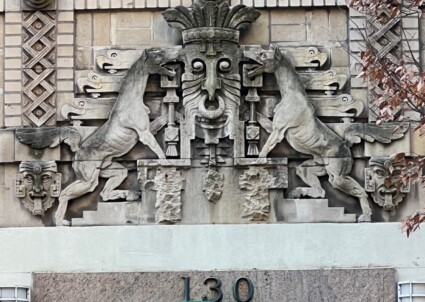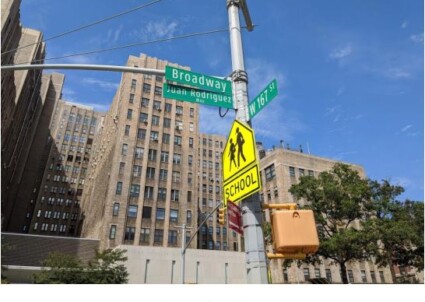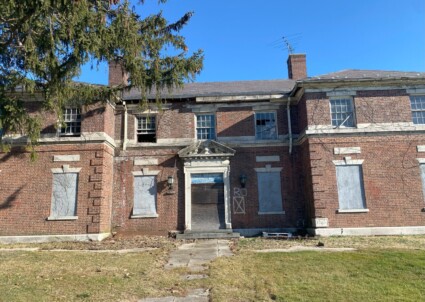Atlantic Avenue, Brooklyn
Prior to European settlement, Atlantic Avenue was as an unpaved trail ending at the East River. By 1816, when the Village of Brooklyn was incorporated, the road became the village’s southernmost boundary. Originally called District Street, it was renamed Atlantic Street in 1855 (at 75 Atlantic Avenue, an engraved street sign marked “Atlantic Street” is still extant) and designated an Avenue in the 1870s. In 1825, District Street developer Charles Hoyt and his associates petitioned the City to establish a ferry between Manhattan and Brooklyn, but Manhattan landholders feared real estate development competition with Brooklyn, so it was not until 1834, the year Brooklyn was incorporated as a city, that a lease was granted for the “South Ferry” between Whitehall Slip and District Street, for which an ornate ferry house was built.
In 1832-36, the Brooklyn and Jamaica Railroad was built to connect District Street to Long Island, with its terminal at the present intersection of Flatbush Avenue. The line was operated by the Long Island Rail Road (LIRR), incorporated in 1834. The world’s first subway was constructed at this time underneath Atlantic Avenue to provide steam train service between the railroad terminal and the South Ferry. After steam trains were outlawed in Brooklyn in 1859, the subway tunnel was abandoned and horse car service was introduced above ground (the brick-vaulted tunnel was long forgotten, but in 1980, many decades later, it was rediscovered by a historian named Bob Diamond). Thus, in the span of just a few years, District Street became the conduit for business transactions and the transport of goods between Long Island and Manhattan. The street was poised for major change and the surrounding area became desirable as a suburban community due to its newly acquired access to Manhattan.
The earliest development began in the 1840s to take advantage of the commercial waterfront. Mercantile and industrial buildings included the Flint Glass Works, producers of gaslight probes, and the original Benjamin Moore Paint Factory at 55 Atlantic Avenue. The transfer and importation of goods was a major enterprise, and businesses like The Fruit Cleaning Company at 14 Atlantic Avenue, prospered. Many commercial buildings from this period are extant on the blocks from Hicks to Clinton Streets. In the late 19th century, the waterfront to Court Street became a premier commercial boulevard with a bank, small shops and a large dry-goods store called Journeay & Burnham, a major shopping hub for wealthy Brooklyn Heights residents. In 1933, bridges and tunnels had surpassed ferries as a means of entering Manhattan, and the South Ferry was terminated. Beginning in the 1940s and completed in 1964, the Brooklyn-Queens Expressway (BQE) significantly altered the character of western Atlantic Avenue, resulting in the demolition of all structures from the waterfront to the mid-point between Columbia and Hicks Streets.
In order to promote economic vitality, attract and retain businesses, create jobs and improve residents’ quality of life, the Atlantic Avenue Business Improvement District (AABID) launched in early 2012. The AABID is also committed to marketing and advocating for the street’s roughly 300 businesses and to making capital improvements, such as street beautification, as well as celebrating and preserving Atlantic Avenue’s history and architecture. The western end of the Avenue is protected by the Brooklyn Heights and Cobble Hill Historic Districts, designated in 1965 and 1969, respectively.
